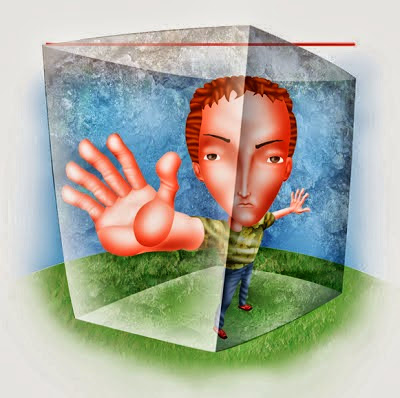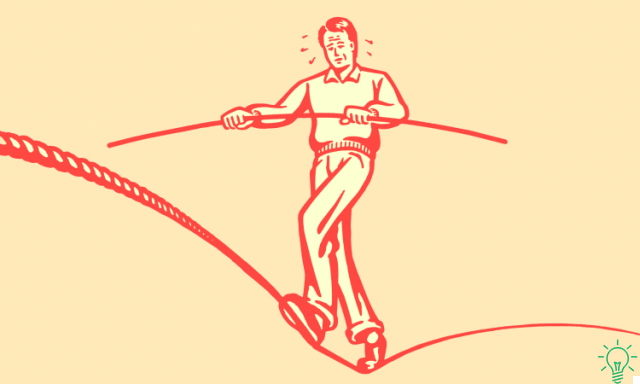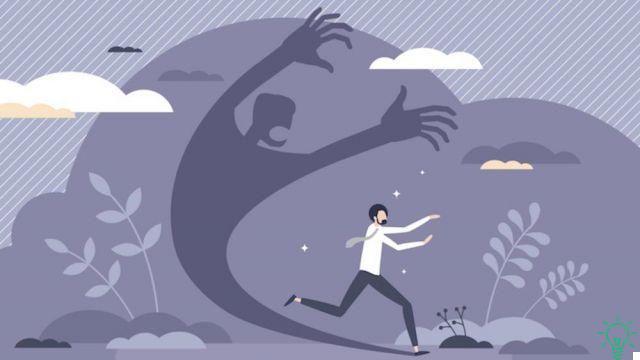
The vagus nerve is the XNUMXth of the twelve pairs of cranial nerves and is the longest in the body. In fact, the word vagus means "vagabond" in Latin, and perfectly illustrates the path of this nerve as it extends through various organs.
The vagus nerve originates in the skull, exactly in the spinal cord, and descends into the neck developing on two branches that reach the abdomen passing through the different organs that are along the path.
The vagus nerve intervenes in the sensitivity of the respiratory mucous membranes and transmits the rhythm, strength and frequency of breathing. It innervates the pharynx, larynx, esophagus, trachea and bronchi, as well as supplies nerve fibers to the heart, stomach, pancreas and liver. But it also carries out the reverse mission; that is, it receives signals from internal organs and sends them to the brain for processing.
Although perhaps the most interesting is the relationship between the vagus nerve and anxiety as it also conveys nervousness, calm, anger or relaxation.
To understand the link between the vagus nerve and anxiety we must understand that the nervous system is made up of two “opposite” systems that constantly send information to the brain.
The sympathetic nervous system prepares us for action, so it feeds mainly on hormones such as adrenaline and cortisol. The parasympathetic nervous system is involved in rest and relaxation.
In practice, both systems work as an accelerator and decelerator. The sympathetic nervous system speeds up and activates us, while the parasympathetic nervous system helps us relax and slow down, for which it uses neurotransmitters such as acetylcholine, which decreases heart rate and blood pressure by making organs work more slowly. .
The functions of the vagus nerve
The vagus nerve controls the parasympathetic system. It intervenes in many functions, from the movements of the mouth to the beating of the heart and, in the same way, when it has problems it can cause various symptoms. Some of the functions of the vagus nerve in our body are:
- Helps regulate heartbeat, controls muscle movements and maintains the rhythm of breathing.
- Maintains the functioning of the digestive tract, allowing the muscles of the stomach and intestines to contract to digest food.
- Facilitates relaxation after a stressful situation or indicates that we are in danger and should not let our guard down.
- Send sensory information to the brain about the state of the organs.
Vague nerve and anxiety
When we are subjected to stressful situations, the sympathetic nervous system is activated. If the tension persists and we are unable to deactivate the physiological response that this triggers, problems will not be long in appearing. At the cerebral level, this involves the activation of two pathways: the hypothalamus-pituitary-adrenal axis and the brain-intestine axis.
The brain responds to stress and anxiety by increasing the production of hormones (CRFs) that travel from the hypothalamus to the pituitary gland where they induce the release of another hormone (ACTH), which in turn travels through the bloodstream to the adrenal glands to stimulate the production of cortisol and adrenaline, which act as suppressors of the immune system and precursors of inflammation, which is why when we feel stressed and anxious we get sick more and, ultimately, we can end up suffering from depression, a disorder that has been linked to an inflammatory response of the brain.
And as if that's not enough, chronic stress and anxiety cause an increase in glutamate in the brain, a neurotransmitter that, when produced in excess, causes migraines, depression and anxiety. Additionally, a high cortisol level reduces the volume of the hippocampus, the part of the brain responsible for forming new memories.
Involvement of the vagus nerve will lead to symptoms such as dizziness, gastrointestinal problems, arrhythmias, difficulty in breathing rate and disproportionate emotional responses. In fact, since the vagus nerve is not able to activate the relaxation signal, the sympathetic nervous system remains active, this will cause the person to respond impulsively and suffer from anxiety.
It is also curious that a study developed at the University of Miami found that vagal tone is transmitted from mother to child. Women who suffered from anxiety, depression, or who experienced a lot of anger during pregnancy, had lower vagal activity, and their children also exhibited low vagal activity and lower levels of dopamine and serotonin.
3 vagal stimulation techniques: how to take care of the vagus nerve?
Vagal tone is an internal biological process that represents the activity of the vagus nerve. Increased vagal tone activates the parasympathetic nervous system, which means we can relax more quickly after a stressful situation and this will positively affect our emotional balance and overall health.
There are several techniques of vagus nerve stimulation
1. Exposure to cold
Cold exposure has been shown to activate the vagus nerve because it stimulates the cholinergic neurons that cross these innervations. In fact, an investigation conducted at the University of Oulu revealed that regular exposure to cold helps reduce the fight-flight response that launches the sympathetic nervous system.
A cold shower of 30 seconds a day or a cold towel on the face may suffice. There are also those who lie on their stomachs putting an ice cube on the back of their neck. Others prefer to quickly drink a glass of cold water.
2. Diaphragmatic breathing
Most people inhale air between 10 and 14 times per minute, which means they have shallow breathing. The ideal would be to inhale air 6 times per minute. Therefore, another very effective vagal stimulation technique is to breathe deeply.
Diaphragmatic breathing in particular activates the vagus nerve and the brain interprets that it is necessary to calm down, even if the nerve has not given that order specifically. The mechanism is the same for which, if you close your eyes and tap your fingers on the eyelids, you perceive short flashes of light because the brain interprets them in this way.
With diaphragmatic breathing, deeper breathing is carried out that brings air to the lower part of the rib cage, using the diaphragm correctly and promoting a state of relaxation.
3. Meditation, yoga and tai chi
Meditation can increase vagal tone. This was demonstrated by researchers at the University of Oregon, who saw how just five days of mindfulness meditation promotes positive feelings towards oneself that cause the vagus nerve to be activated, at the same time that it modulates the activity of the parasympathetic nervous system. a much better result than conventional relaxation techniques.
Practices such as yoga and tai chi are also ideal for stimulating the vagus nerve. A study developed at Boston University revealed that yoga increases GABA neurotransmitters, which promote the feeling of calm and serenity by helping to combat anxiety and stress. Tai-chi, on the other hand, is capable of balancing the heart rate, which means it stimulates vagal modulation, according to researchers from the National Yang-Ming University School of Medicine.


























